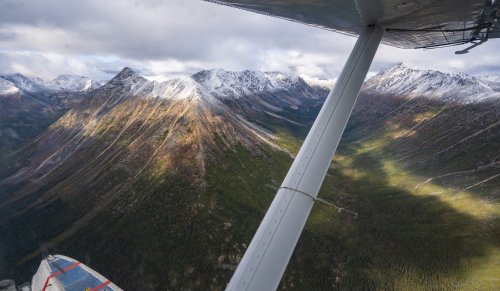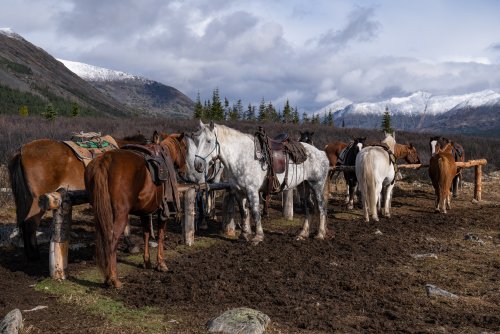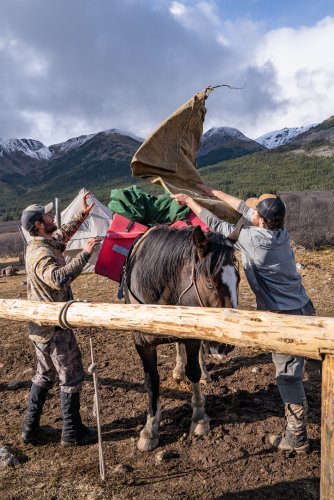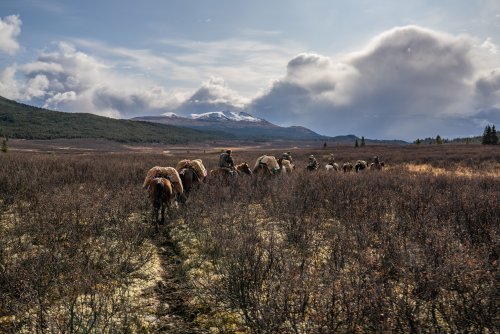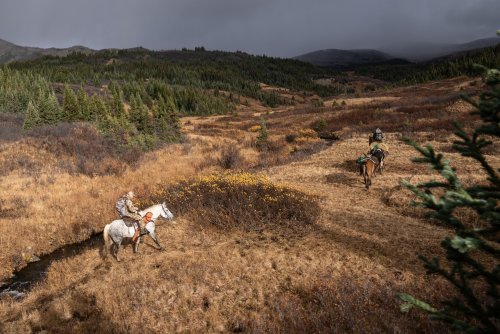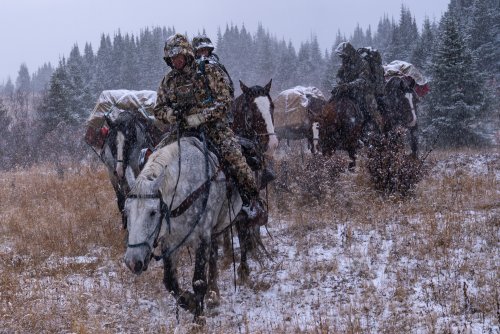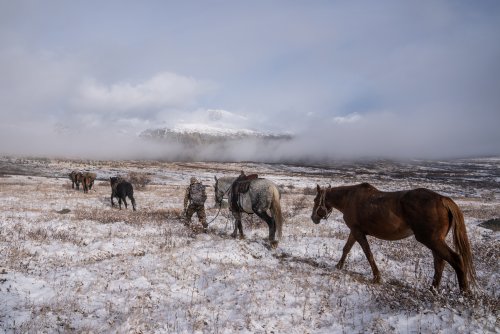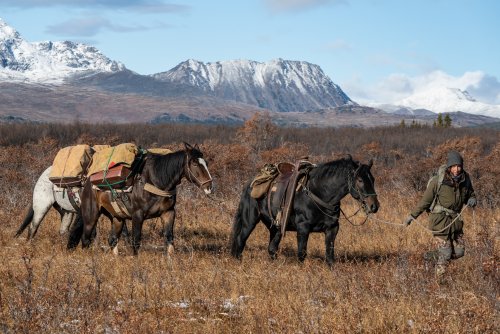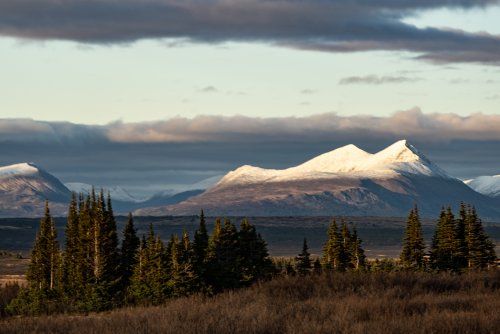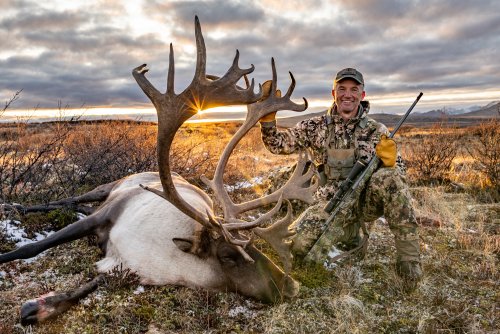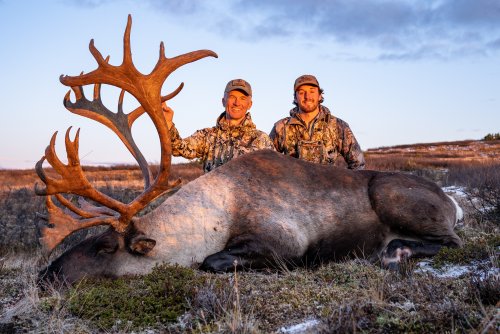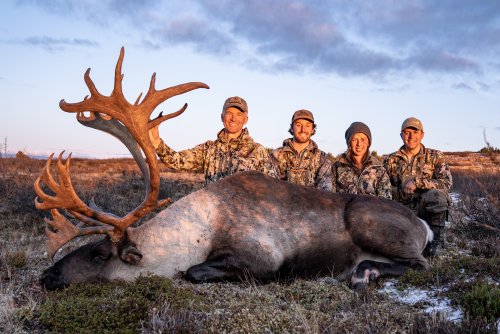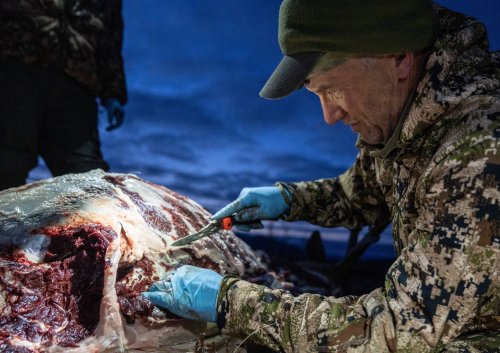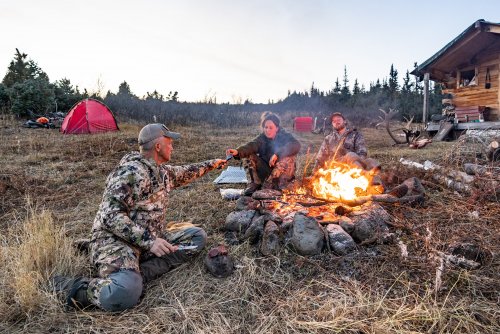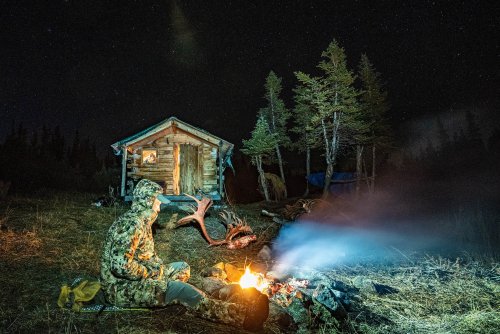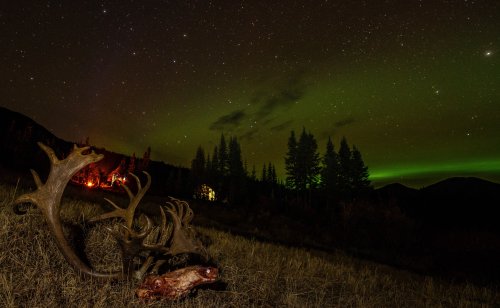Having been on the road, almost non-stop, since August 11th, I’ve been a bit absent here on Hunt Talk this fall. Got home late last night following the 32-hour drive from far northern British Columbia.
This hunt has been a dream since I was a teenager. Sometime around 8th grade, I read an article in a hunting magazine about hunting Mountain Caribou in the Cassiar Region of northern British Columbia. Since that time, Mountain Caribou in the Cassiars has bounced around in my mind and when asked what my ultimate hunt as, such would be my reply without a second of hesitation.
I can’t tell you why that article struck me. Maybe it was a kid from the thick flat woods of northern Minnesota who trying to conjure the most foreign and unattainable hunting idea he could imagine. Maybe it was the images of the landscape and the caribou. Or, maybe it was just a bad day and this article took my mind to a place that seemed more enjoyable.
Roll forward forty years and I find myself on the road to Watson Lake, Yukon Territories, where I would have my last connection to the digital world before driving an hour south to the small camp of Backcountry BC & Beyond, an outfit owned and operated by Dustin Roe, a person I’ve known for a few years.
A couple years ago, when he was in Bozeman for a Sitka event we were both invited to, I had Dustin on my podcast. When we finished, he asked me what my dream hunt would be. I suspect he thought it would be sheep or some other highly cherished hunt. When I replied, “Mountain Caribou,” he got a big smile and asked, “Really?”
“Yup, really. Been dreaming about it since I was a teenager.”
He then told me he had just bought a new territory that included the best Mountain Caribou in BC. I thought he was jerking my chain. He had some pics on his phone of past caribou the prior territory owner had taken. They were impressive, at least to a guy who had never seen a Mountain Caribou. He told me to think about it, though 2017 and 2018 were already booked.
I came home that evening and kind of hinted to Mrs. Fin that I learned about a Mountain Caribou operation. Well, maybe “kind of hinted” is the wrong way to say it. “Obsessed about it” would probably be a more fitting term.
Imagine my surprise (and glee) when Mrs. Fin said something to the effect of, “You going to talk about it the rest of your life, or you gonna go and do it?” I think she had tired of me making mention of the Cassiars and Mountain Caribou whenever my mind had some time to drift without distraction.
I looked at her with the “you serious?” look. She smiled and gave me the lecture of how I always tell other people to follow their dream, do what they want, hunt when they can, etc., but for some reason I find reasons to not do some of the things we both know I want to do.
They say your spouse knows you better than you know yourself. Whoever said that is correct, at least in my marriage. I laid out my dilemma, excuses, or whatever you want to call irrational deferral of dreams.
Having saved hunting funds for years, finances were not a legitimate excuse. Having scaled back my CPA duties and no kids at home, time constraints we no longer an excuse. I used the “but it’s a guided hunt” excuse and she lectured me about the fact I had previously told her that I had two options if I wanted to hunt Mountain Caribou; go guided or don’t go. She was having none of it.
I found myself without any well-presented rebuttal; thankfully.
I contacted Dustin for some more details, as the price would likely be more than Mrs. Fin expected. And it would require at least another two weeks on the road when including travel, sandwiched in between all the other obligations and travel I have in a fall filming season. I got the details and Dustin said he would tentatively hold a spot for me in 2019, pending further consideration on my part. He also told me the full cost, including licenses, tags, goods and services tax, and transporter flight. Dustin also suggested adding moose, as the area is known for some of the biggest Canada moose in BC.
I added it all up. Gulp! How to justify that? Dinner was another conversation, more like a lecture, about all the friends and family we’ve know who were going to “do that someday” and who lost their health or lives before “someday” came around. She’d walked me out the plank and she knew it. We agreed that I would call Dustin and she lectured me of the stupidity of not adding moose as a possibility, given he only charges for the second species if you are successful.
So, at the next trade show in January 2018, I signed up with Dustin for late September/early October of 2019. He told me that is his best Mountain Caribou dates and that was my primary goal, I should go then. Deal!
My worry of this hunt was that no hunt, no outfitter, no outcome, could live up to decades of romantic daydreams about what the Cassiars would be like. No animal taken could ever equal the visions of thick, long-beamed, double shovel caribou that I convinced myself must exist somewhere in those mountains. I worried my years and years of dreaming had set expectations where even the best hunt would still fall short of expectations I had built.
Regardless of those unrealistic expectations, September 22nd found me and Marcus in the Titan, showing our passports at the Canadian border, with wild visions of what the next two weeks might hold in store. A dream, my greatest of all hunting dreams, was about to be lived.
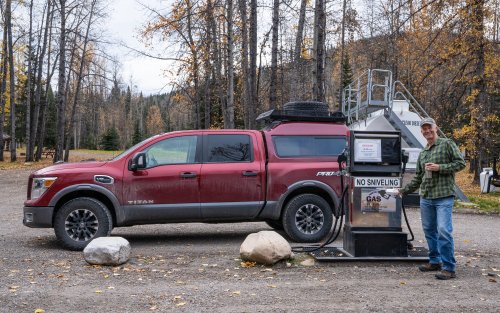
This hunt has been a dream since I was a teenager. Sometime around 8th grade, I read an article in a hunting magazine about hunting Mountain Caribou in the Cassiar Region of northern British Columbia. Since that time, Mountain Caribou in the Cassiars has bounced around in my mind and when asked what my ultimate hunt as, such would be my reply without a second of hesitation.
I can’t tell you why that article struck me. Maybe it was a kid from the thick flat woods of northern Minnesota who trying to conjure the most foreign and unattainable hunting idea he could imagine. Maybe it was the images of the landscape and the caribou. Or, maybe it was just a bad day and this article took my mind to a place that seemed more enjoyable.
Roll forward forty years and I find myself on the road to Watson Lake, Yukon Territories, where I would have my last connection to the digital world before driving an hour south to the small camp of Backcountry BC & Beyond, an outfit owned and operated by Dustin Roe, a person I’ve known for a few years.
A couple years ago, when he was in Bozeman for a Sitka event we were both invited to, I had Dustin on my podcast. When we finished, he asked me what my dream hunt would be. I suspect he thought it would be sheep or some other highly cherished hunt. When I replied, “Mountain Caribou,” he got a big smile and asked, “Really?”
“Yup, really. Been dreaming about it since I was a teenager.”
He then told me he had just bought a new territory that included the best Mountain Caribou in BC. I thought he was jerking my chain. He had some pics on his phone of past caribou the prior territory owner had taken. They were impressive, at least to a guy who had never seen a Mountain Caribou. He told me to think about it, though 2017 and 2018 were already booked.
I came home that evening and kind of hinted to Mrs. Fin that I learned about a Mountain Caribou operation. Well, maybe “kind of hinted” is the wrong way to say it. “Obsessed about it” would probably be a more fitting term.
Imagine my surprise (and glee) when Mrs. Fin said something to the effect of, “You going to talk about it the rest of your life, or you gonna go and do it?” I think she had tired of me making mention of the Cassiars and Mountain Caribou whenever my mind had some time to drift without distraction.
I looked at her with the “you serious?” look. She smiled and gave me the lecture of how I always tell other people to follow their dream, do what they want, hunt when they can, etc., but for some reason I find reasons to not do some of the things we both know I want to do.
They say your spouse knows you better than you know yourself. Whoever said that is correct, at least in my marriage. I laid out my dilemma, excuses, or whatever you want to call irrational deferral of dreams.
Having saved hunting funds for years, finances were not a legitimate excuse. Having scaled back my CPA duties and no kids at home, time constraints we no longer an excuse. I used the “but it’s a guided hunt” excuse and she lectured me about the fact I had previously told her that I had two options if I wanted to hunt Mountain Caribou; go guided or don’t go. She was having none of it.
I found myself without any well-presented rebuttal; thankfully.
I contacted Dustin for some more details, as the price would likely be more than Mrs. Fin expected. And it would require at least another two weeks on the road when including travel, sandwiched in between all the other obligations and travel I have in a fall filming season. I got the details and Dustin said he would tentatively hold a spot for me in 2019, pending further consideration on my part. He also told me the full cost, including licenses, tags, goods and services tax, and transporter flight. Dustin also suggested adding moose, as the area is known for some of the biggest Canada moose in BC.
I added it all up. Gulp! How to justify that? Dinner was another conversation, more like a lecture, about all the friends and family we’ve know who were going to “do that someday” and who lost their health or lives before “someday” came around. She’d walked me out the plank and she knew it. We agreed that I would call Dustin and she lectured me of the stupidity of not adding moose as a possibility, given he only charges for the second species if you are successful.
So, at the next trade show in January 2018, I signed up with Dustin for late September/early October of 2019. He told me that is his best Mountain Caribou dates and that was my primary goal, I should go then. Deal!
My worry of this hunt was that no hunt, no outfitter, no outcome, could live up to decades of romantic daydreams about what the Cassiars would be like. No animal taken could ever equal the visions of thick, long-beamed, double shovel caribou that I convinced myself must exist somewhere in those mountains. I worried my years and years of dreaming had set expectations where even the best hunt would still fall short of expectations I had built.
Regardless of those unrealistic expectations, September 22nd found me and Marcus in the Titan, showing our passports at the Canadian border, with wild visions of what the next two weeks might hold in store. A dream, my greatest of all hunting dreams, was about to be lived.





